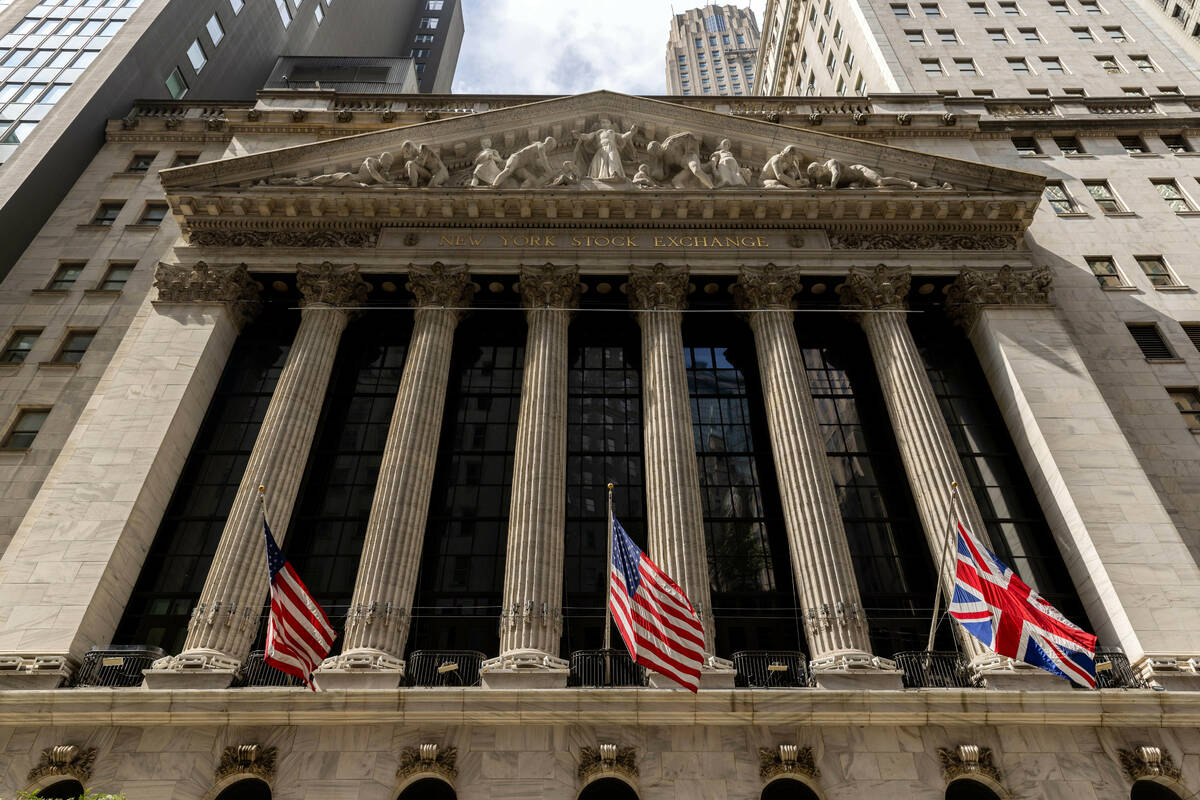Dow up 1,200 points on cooling inflation reports
NEW YORK — Wall Street blasted off Thursday to soar to its best day in more than two years as exhilaration swept through markets after a report showed inflation in the United States eased last month by even more than expected.
The S&P 500 surged 5.5%, while the Dow Jones Industrial Average leaped 1,200 points and the Nasdaq composite packed what could be a year’s worth of gains into one day by roaring 7.4% higher.
Prices jumped for everything from metals to European stocks as investors took the data as a sign that the worst of high inflation may finally be behind us, though analysts cautioned it’s still premature to declare victory. Even bitcoin rose to claw back some of its steep plunge from prior days caused by the crypto industry’s latest crisis of confidence.
Some of the most dramatic action was in the bond market, where Treasury yields tumbled sharply as investors pared bets for how aggressive the Federal Reserve will be in hiking interest rates to get inflation under control. Such hikes have been the main reason for Wall Street’s struggles this year and are threatening a recession.
The yield on the 10-year Treasury, which helps set rates for mortgages and other loans, fell to 3.82% from 4.15%. It’s a dramatic move for the bond market, and the yield was on track for its biggest daily drop since 2009, according to Tradeweb. The two-year yield, which more closely tracks expectations for Fed action, fell to 4.32% from 4.62% and was on pace for its sharpest fall since 2008.
All the action stemmed from a U.S. government report showing that inflation slowed in October for a fourth straight month since hitting a peak of 9.1% in June. The reading of 7.7% was better than the 8% economists were expecting.
Perhaps more importantly, inflation also slowed more than expected after ignoring the effects of food and energy prices. That’s the measure the Fed pays closer attention to. So did inflation between September and October.
“The month-on-month rate of inflation is much more informative,” said Brian Jacobsen, senior investment strategist at Allspring Global Investments. “On that measure, inflation is still high, but not scary high.”
Slower inflation could keep the Fed off the most aggressive path in raising interest rates. It’s already raised its key rate to a range of 3.75% to 4%, up from virtually zero in March.
By raising rates, the Fed is intentionally trying to slow the economy and jobs market in hopes of undercutting inflation, which hit a four-decade high in the summer. The risk is that it can create a recession if it goes too far, and higher rates drag down on prices for stocks and other investments in the meantime.
Higher rates have particularly hit high-growth tech stocks, cryptocurrencies and other investments seen as the riskiest or most expensive.
Big Tech stocks were some of the most buoyant forces on Wall Street following the inflation report. Apple rose 8.9%, Microsoft climbed 8.2% and Amazon soared 12.2%.
The Nasdaq composite, which is full of tech-oriented stocks, soared to its best day since March 2020, when Wall Street was in the midst of its frenzied recovery from the crash caused by the coronavirus. The broader S&P 500, which sits at the heart of many 401(k) accounts, had its best day since April 2020.
The S&P 500 climbed 207.80 points to 3,956.37. The Dow gained 1,201.43, or 3.7%, to 33,715.37, and the Nasdaq shot up 760.97, or 7.4%, to 11,114.15.
Homebuilders and other companies in the housing industry were also strong on hopes the Fed will take it easier on rate hikes that have already sent mortgage rates to industry-punishing levels. PulteGroup jumped 13.5%, and Lennar rose 12.6% for some of the bigger gains in the S&P 500.
Slower inflation could get the Federal Reserve to downshift the size of its rate hikes at its next policy meeting in December, after it pushed through four straight mega increases of 0.75 percentage points. That could open the way for the Fed to return to the more typical increases of 0.25 percentage points before pausing hikes completely.
Following Thursday’s inflation report, traders increasingly shifted into bets for the Fed to raise rates by only 0.50 percentage points next month, instead of a bigger hike.
While Thursday’s report on inflation was encouraging, analysts cautioned the Fed’s campaign against high inflation is likely still far from over. Inflation data has also given false hope before, only to reaccelerate again.
“The Fed was adamant that it won’t hit the brakes on rate hikes until inflation slows, and while the market’s rally indicates investors may see light at the end of the tunnel, it will get one more reading before its decision next month,” said Mike Loewengart, head of model portfolio construction at Morgan Stanley Global Investment Office. “Remember that even as we see a slowdown, prices remain elevated and have a long way to go before normalizing.”
Another potentially market-shaking report will hit Wall Street Friday, when the latest reading arrives on how much inflation U.S. households see coming in future years. Fed Chair Jerome Powell has said he’s paying particularly close attention to such expectations.
One of the reasons the Fed has been so aggressive about hiking rates is because it wants avoid a debilitating cycle where expectations for high inflation push people to change their behaviors in ways that lead to even higher inflation.
AP Business Writers Joe McDonald, Matt Ott and Tom Krisher contributed.

















